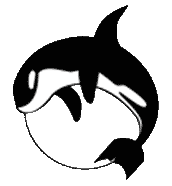Alcala, Eugenio and Romero Cano, Victor  ORCID: https://orcid.org/0000-0003-2910-5116
2024.
On the human-machine gap in car racing: A comparative analysis of machine performance against human drivers.
IEEE Access
12
, pp. 168755-168764.
10.1109/ACCESS.2024.3497719 ORCID: https://orcid.org/0000-0003-2910-5116
2024.
On the human-machine gap in car racing: A comparative analysis of machine performance against human drivers.
IEEE Access
12
, pp. 168755-168764.
10.1109/ACCESS.2024.3497719

|
|
PDF
- Published Version
Available under License Creative Commons Attribution Non-commercial No Derivatives. Download (2MB) |
Abstract
Automobile racing presents a formidable challenge, demanding drivers to operate their vehicles at the limits of friction while maintaining control. Achieving optimal performance requires extensive coaching for car owners and demonstrative methodologies in race-driving coaching exhibit considerable potential to enhance the learning process. However, since the learner should be in the driver’s seat, this methodologies can greatly benefit from autonomous and consistent vehicle operation capabilities at performance levels comparable to or exceeding those achieved by professional human drivers. This study presents a real-world comparison of an in-house developed autonomous racing system against five highly skilled race-car drivers in a five-lap time trial race under identical conditions. Temporal, trajectory and dynamic performance metrics describing the driving performance of each participant were obtained and discussed to gain insights into the human-machine performance gap. Our findings demonstrate that the autonomous driving system can perform at a very high level, outperforming highly skilled racing drivers. Notably, the autonomous system excelled in areas such as consistency and smoothness, dynamically generating precise trajectories with lower dispersion than the human participants. The system also maintained optimal slip angles and required fewer significant steering corrections, indicating smother driving. Our analysis showcases where the autonomous system falls short of the best human drivers, providing clear directions for further development to close the performance gap on the racetrack. These results underscore the potential of autonomous racing systems as real-life racing demonstrators and therefore their utility for enhancing race-driving coaching.
| Item Type: | Article |
|---|---|
| Date Type: | Published Online |
| Status: | Published |
| Schools: | Computer Science & Informatics |
| Publisher: | Institute of Electrical and Electronics Engineers |
| ISSN: | 2169-3536 |
| Date of First Compliant Deposit: | 18 November 2024 |
| Date of Acceptance: | 4 November 2024 |
| Last Modified: | 16 Dec 2024 13:48 |
| URI: | https://orca.cardiff.ac.uk/id/eprint/174114 |
Actions (repository staff only)
 |
Edit Item |




 Dimensions
Dimensions Dimensions
Dimensions
 Cardiff University Information Services
Cardiff University Information Services

